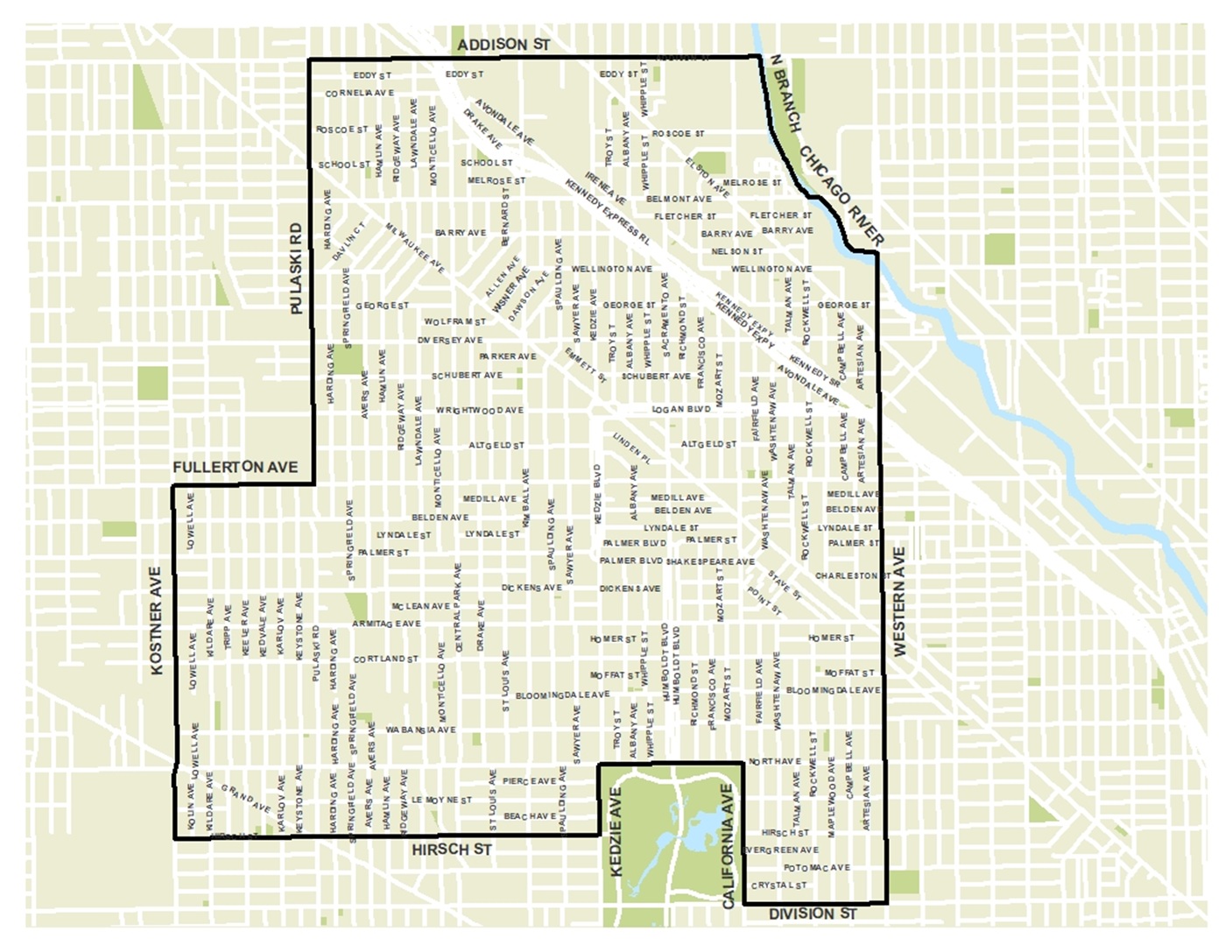If you're a landlord or real estate investor in Chicago, you've likely heard about the controversial Northwest Side Preservation Ordinance. Recently, on Straight Up Chicago Investor, Brie Schmidt, managing broker and owner of Second City Real Estate, took a dive deep into this ordinance and its significant implications for property owners. She’s been a Chicago landlord for 13 years and has been an investor agent with her own company for a decade. Listen to the full podcast at the link below.
Episode 361: What to Do Regarding the Northwest Side Preservation Ordinance
What is the Northwest Side Preservation Ordinance?
The Northwest Side Preservation Ordinance (NSPO) went into effect on March 1, 2025. It covers the "606 area," roughly spanning from Addison down to Division and from the expressway to Pulaski. The ordinance impacts virtually every type of housing, including condos, single-family homes, mixed-use properties, and even larger apartment buildings.

First Right of Refusals
As Brie outlined, a major provision of the ordinance grants tenants the "right of first refusal." This gives renters between 30 and 90 days to decide if they want to buy their building before the owner can sell it to another buyer. While the ordinance gives tenants considerable leverage, owners have voiced frustrations that this dramatically slows down property transactions.
Brie argues that some of the ordinance’s details show a lack of practical understanding of real estate transactions and basic business principles.
How Affordable is Affordable Housing?
For example, through the ordinance, tenants can come together to form a tenant association and collectively buy the building. The city offers grant support to help them acquire the building. While a fantastic idea, it comes with a restrictive covenant that the property must remain affording housing for 30 years.
Sounds great in theory, but a practical application of a sample building tells a different story. By Year 9, the building will be cash flow negative. By Year 15, that same building will lose ~$1k a month and be worth 20% less than what the tenant association paid for it. All of the equity will be wiped out. If the collective tries to sell, what buyer wants a property with 15 years left on the affordable housing restriction?
Landlords, Pay Attention to the Specifics
Apart from the delay closing on a property, Chicago landlords and investors must consider several other aspect of this new ordinance:
1. Lengthy and Costly Tenant Negotiations
Chicago isn’t the first area to experience the ramifications of tenant buyout options. Since the 1980s, landlords in Washington, DC, have dealt with a similar ordinance.
In DC, landlords often must negotiate with tenants to get them to sign their waiver of rights. Brie said it's common practice for owners to offer tenants buyouts, concessions, lower rent, or three-year leases.
This significantly reduces a landlord’s returns while creating massive delays in the selling process.
2. Right of Refusal Resale Games
Tenants also have the ability to see their right of first refusal rights. In some cases, tenants in DC exercised their rights only to sell those rights back to the original buyer, often netting tens of thousands of dollars in the process.
This interesting allowance can net renters upwards of $50-100k for selling their contracts to the original buyers by using their right of first refusal. Unsurprisingly, this potential practice adds a layer of complexity and risk to property transactions in Chicago’s affected areas for both sellers and buyers of investment property.
2. Impact on Owner-Occupied Properties
Many real estate investors bought their first rental properties through house hacking, buying a multi-flat property and living in one of the units. If you’re looking to house hack, pay close attention. Brie highlighted how the new ordinance can negatively impact owner-occupants, especially those carrying for owner-occupied financing.
Buyers hoping to move into their newly purchased homes must now wait at least six months to occupy the property, even if tenants' leases have expired. This matters because it directly conflicts with the terms of many owner-occupied loans, which require occupancy within 60 days of closing. This effectively eliminates most owner-occupied financing options.
Those who currently live in owner-occupied investment buildings now have to vacate their buildings before they can deliver the notice to other residents of their intent to list it.
Brie noted her research shows that there are 3,800 two- to four-unit properies in the ordinance zone; 80 percent of which are owner-occupied. If more than 3,000 owners have to vacate their property before selling it, that goes against the whole intent (to keep people in their homes).
3. Increased Demolition Fees
Demolition fees in the affected zone have skyrocketed to a minimum of $60,000 per building or $20,000 per unit. Note: this also impacts Pilsen, which is outside the ordinance zone.
Brie noted that developers likely won’t absorb these fees, leaving seller to foot the bill. Those demolition fees come directly from the seller pockets, likely wiping out decades of equity. Brie added that these are typically distressed sellers who need to sell their property quickly.
Meanwhile, 1031 exchanges, often crucial for landlords seeking to reinvest capital efficiently and defer capital gains taxes, are next to impossible under these conditions.
Practical Implementations of NSPO
Because of these and many more complexities, Brie and her partner Bob Floss created a video that walks through the ordinance. They conducted extensive research on the clauses in the NSPO and the practical implementation in DC.
In the video Brie and Bob discuss how the ordinance works in real life in Northwest Side Chicago. They walk through the challenges of implementation for owners and what to expect in the future based on outcomes in DC.
[Embed video: The Unintended Consequences of Chicago’s New Land Ordinance]
Despite her strong opposition to several provisions, Brie acknowledged some positive intentions behind the ordinance, like preserving rental housing stock. She likes that no block can contain more than 50% single-family homes, something she argues should be applied throughout all of Chicagoland.
“We need to preserve our housing stock,’ she said. “We’re losing rental units at a very alarming rate. But this is just not the way to go about it.”
The Problem with Aldermanic Prerogative
Perhaps most alarming about the ordinance is that it was passed, through aldermanic prerogative. This gives the alderman the absolute right to make zoning and building decisions in their ward. This particular ordinance was passed very quickly; it was approved by city council within days and was effective March 1. The ordinance passed without any input from the public or interactions with building and landlord associations.
In fact, Brie questioned how something could be purported to be good for the community without involving the community and refusing input from any stakeholders. Many feel it points to an alarming amount of power for an alderman to hold in their ward.
Plus, with the relative ease that this ordinance passed, many fear it sets a precedent for other Chicago wards to pass similar rules.
The interesting twist in this case? One of the aldermen who approved NSPO isn’t even an alderman anymore. And, the main sponsor left his post in the Northwest Side the same month the ordinance went into effect to run the Park District.
What Can You Do?
If this alarms you, Brie urges landlords and property owners to voice their opposition. She pointed to opposition already voiced by the Chicago Association of Realtors® (CAR) and Neighborhood Building Owners Alliance (NBOA). Because of their efforts, the current ordinance includes many modifications. Luke Blahnik covered the specifics of the original language before the amendments in Episode 327.
To advocate for more changes, landlords affected by this ordinance and others rightfully concerned about similar ordinances throughout Cook County must get involved. Brie invites interested parties visit the FAQ page on NBOA. She highlighted a call-to-action button to quickly send opposition emails directly to all city council members along with an additional option to request updates from city council members. If selected, city council members will continually provide updates as additional calls to action come forward.
“This advocacy is vital to ensure aldermen reconsider or amend the ordinance to minimize unintended consequences,” she said. “I don’t know if completely eliminating this ordinance is possible, but there are ways to make it more workable.”
By staying vocal and involved, Chicago’s real estate community can work together to influence policy, ensuring it balances the needs of tenants with the practical realities of property ownership and management.
Stay Informed and Take Action
If you own property in Chicago, staying ahead of the changing laws isn’t optional—it’s critical. That’s why we break it all down on the GC Realty & Development blog with real, actionable tips that actually apply to what you’re dealing with as a local landlord or investor.
And if you want to talk through how this impacts your property, book a call with us. We’ll cut through the noise and give you straight-up advice that helps you make the right move.

 Vendor Portal
Vendor Portal
_1.png)
